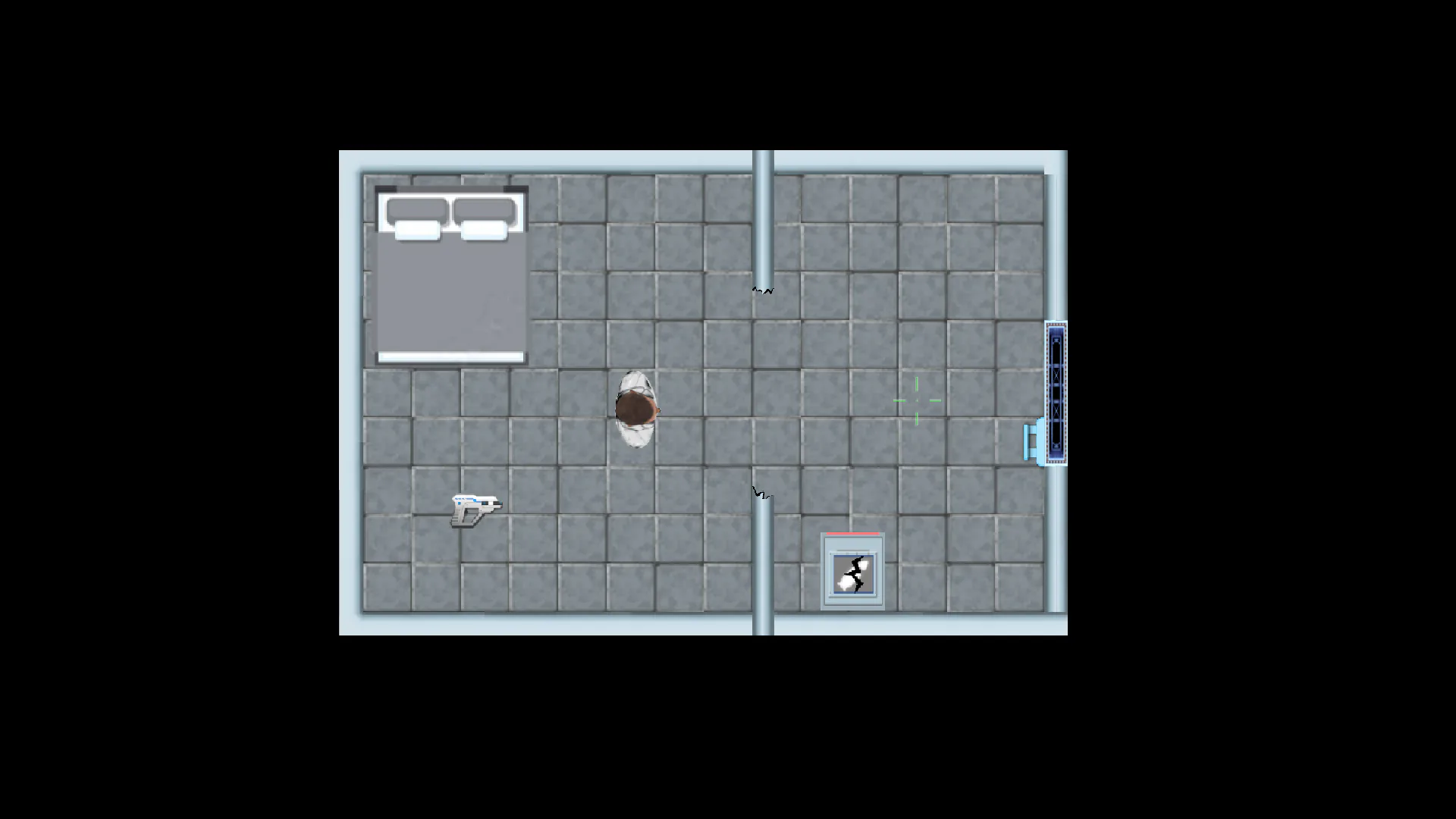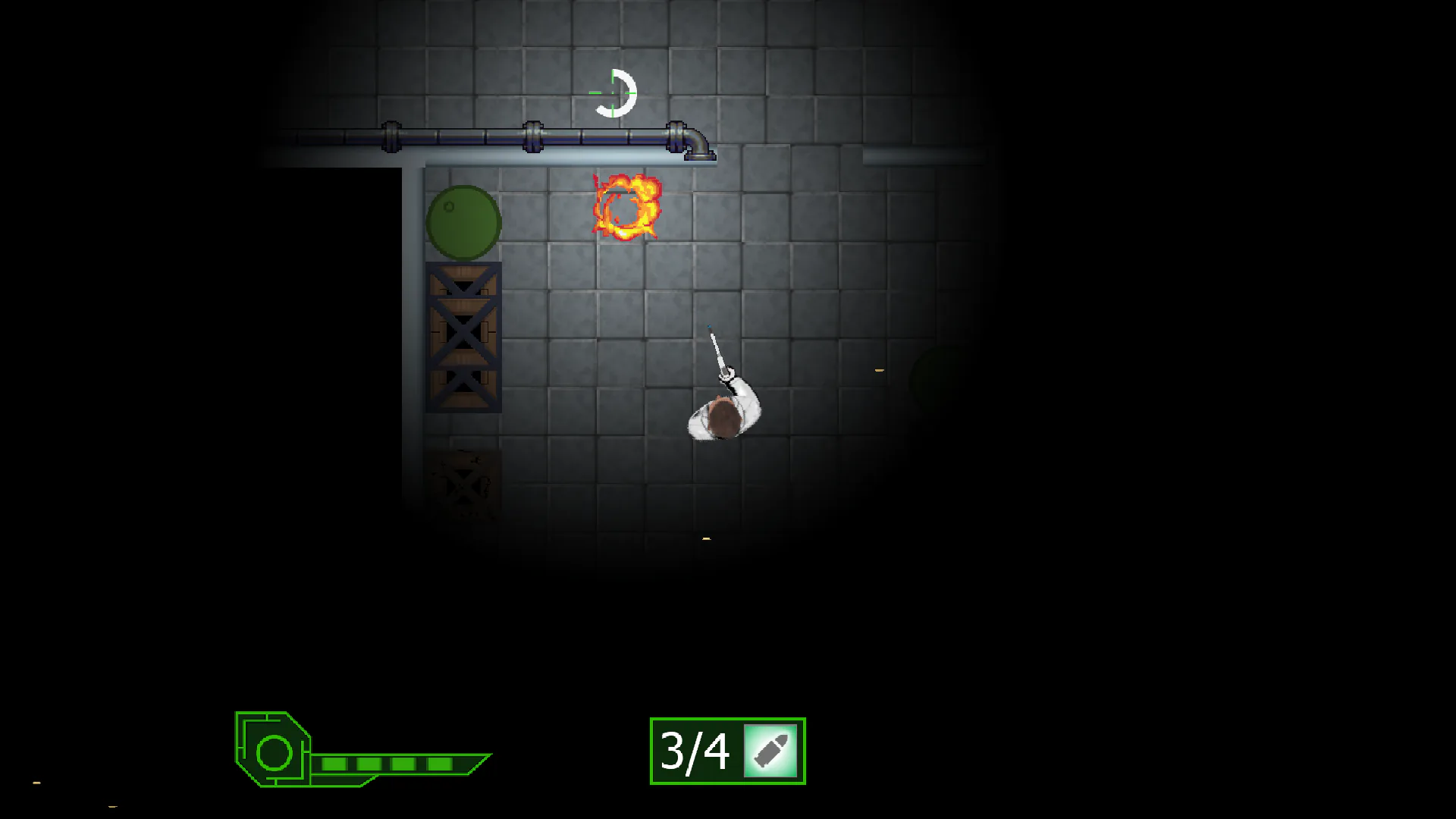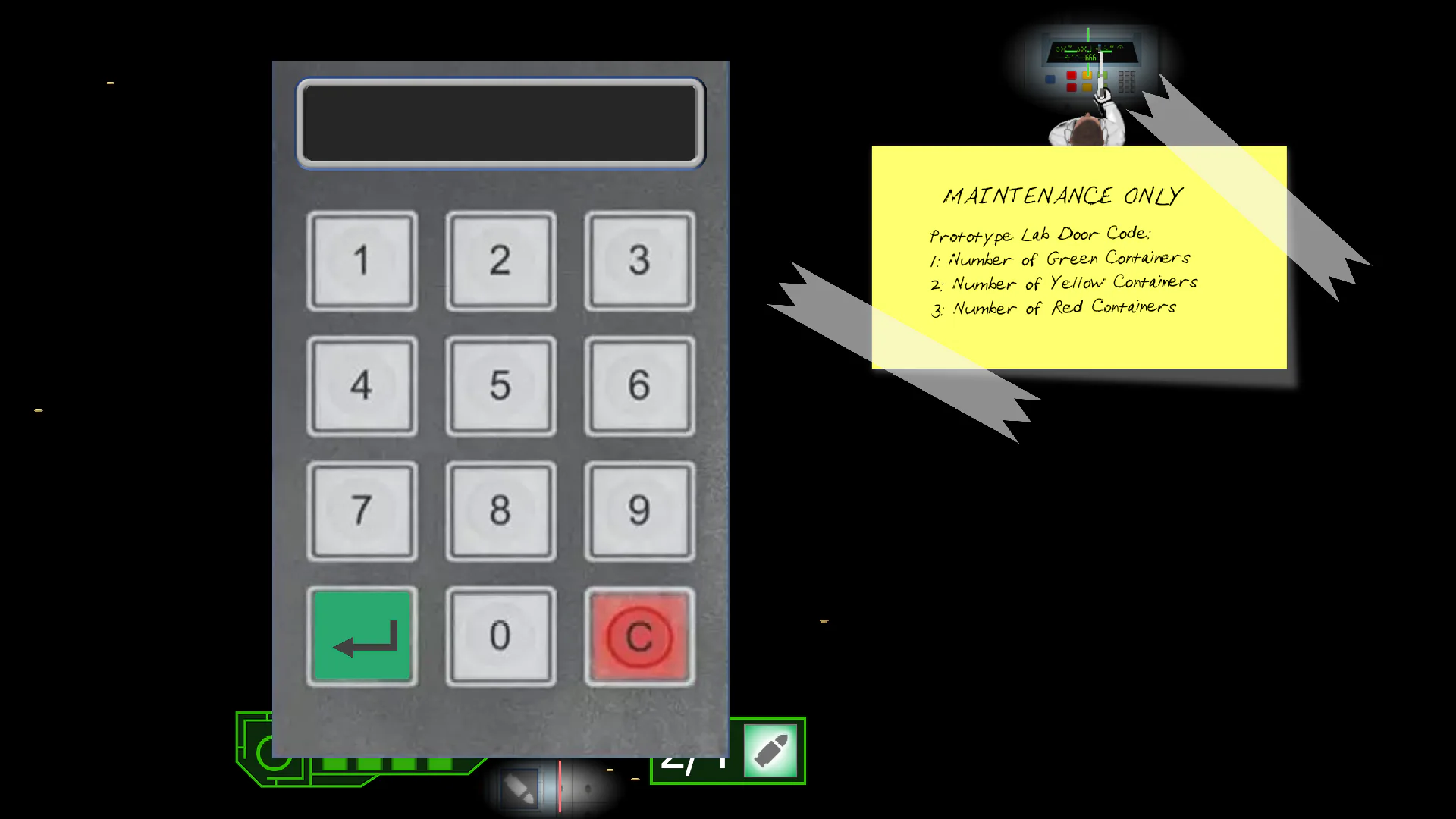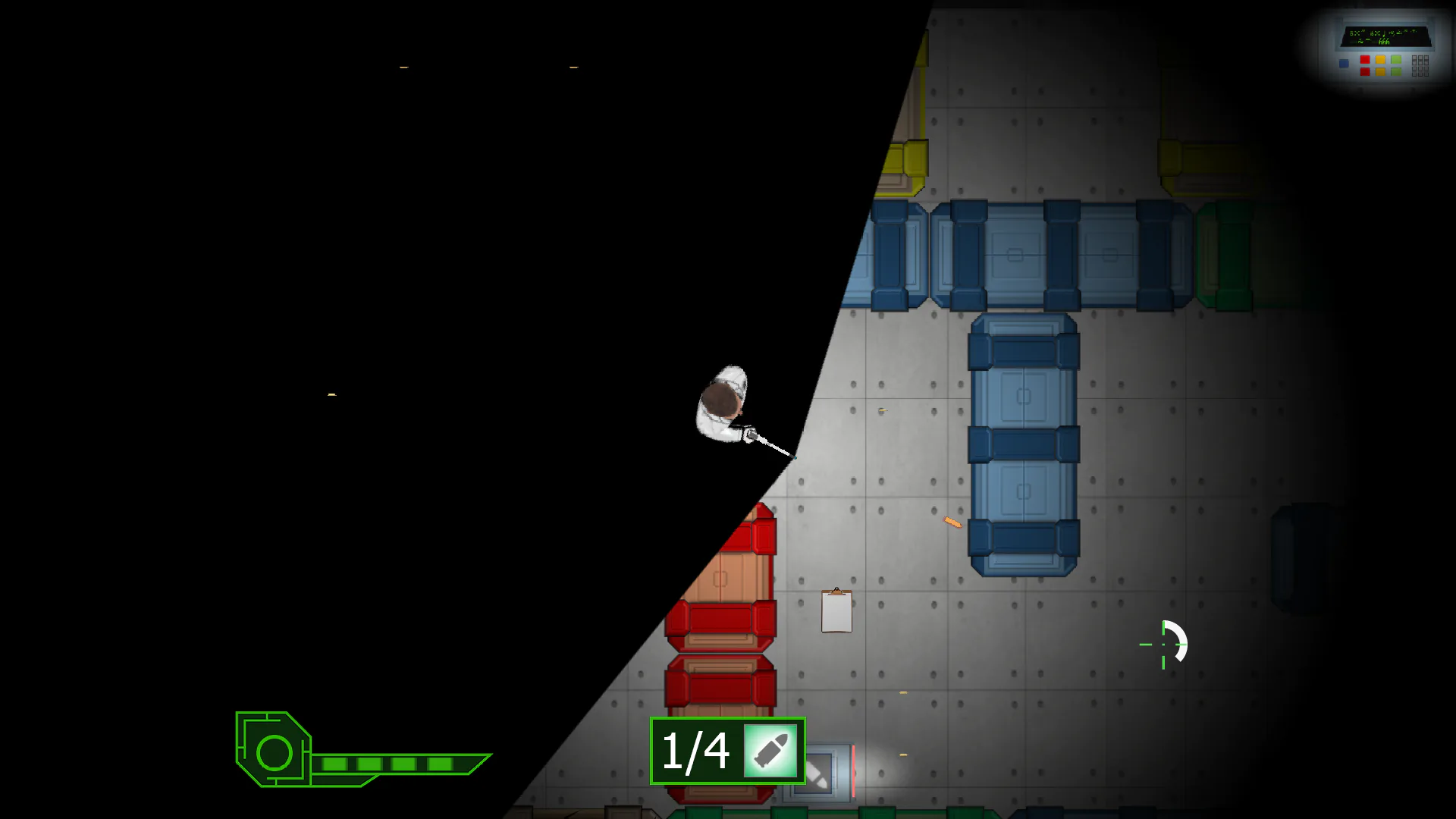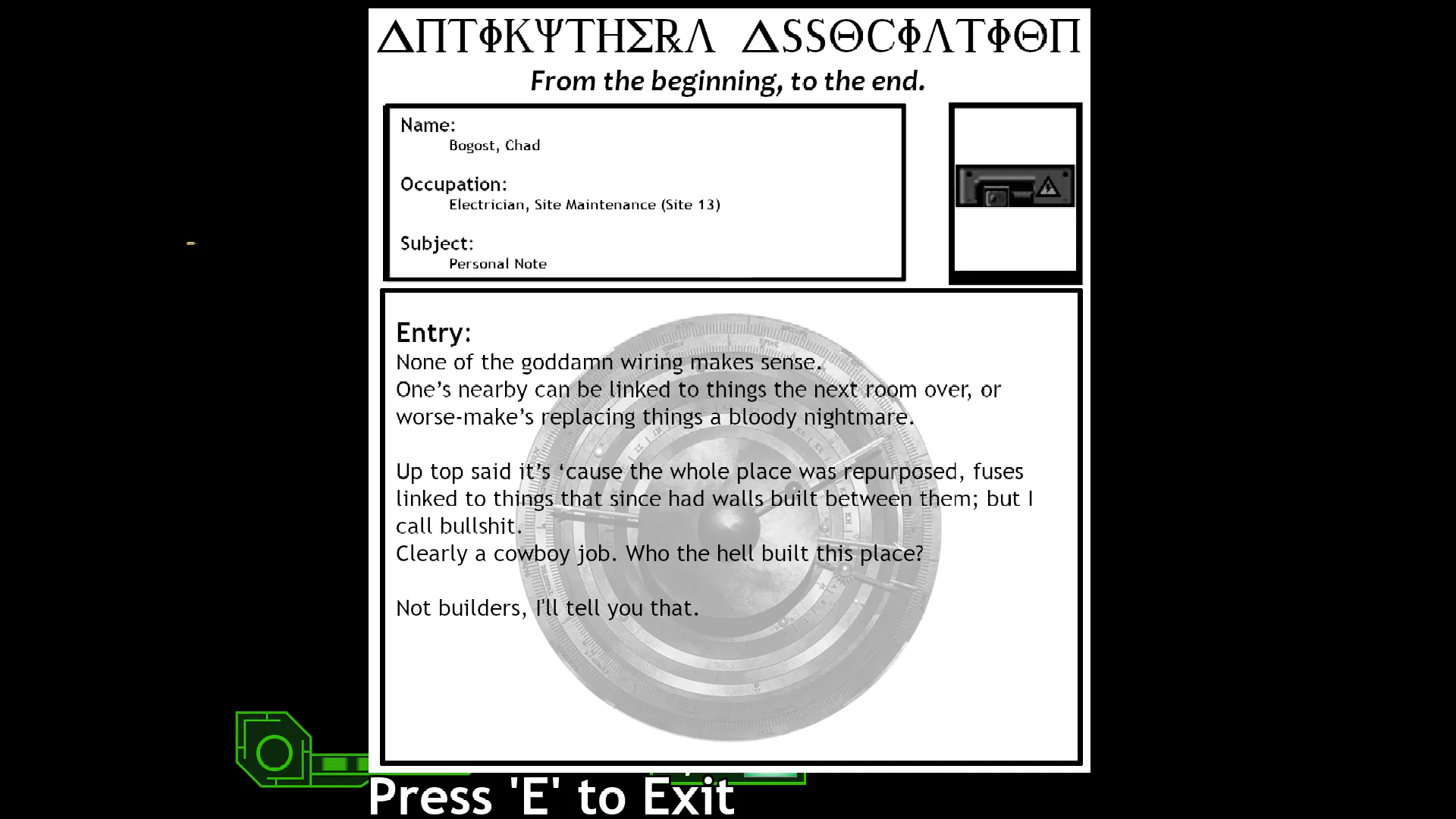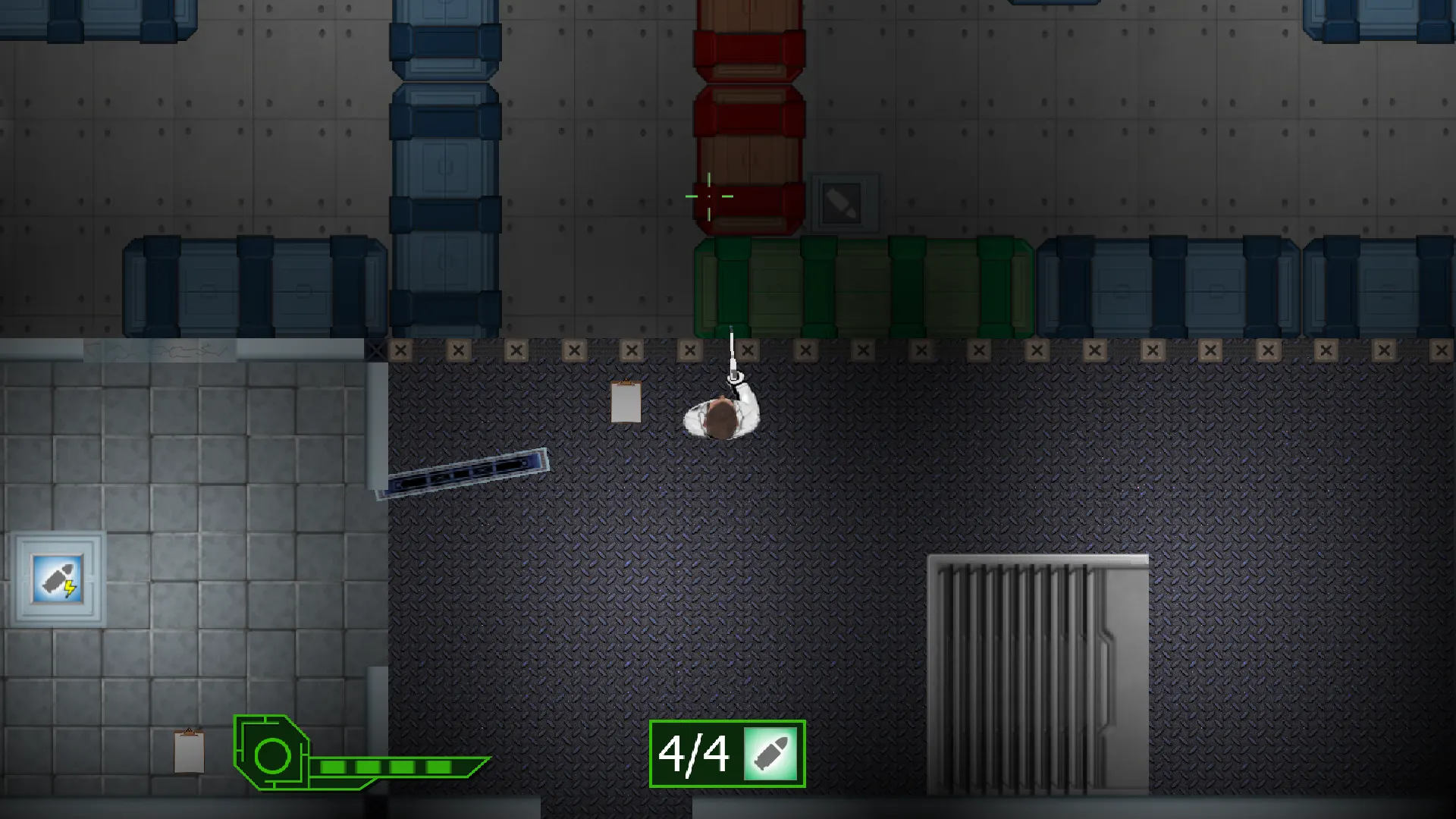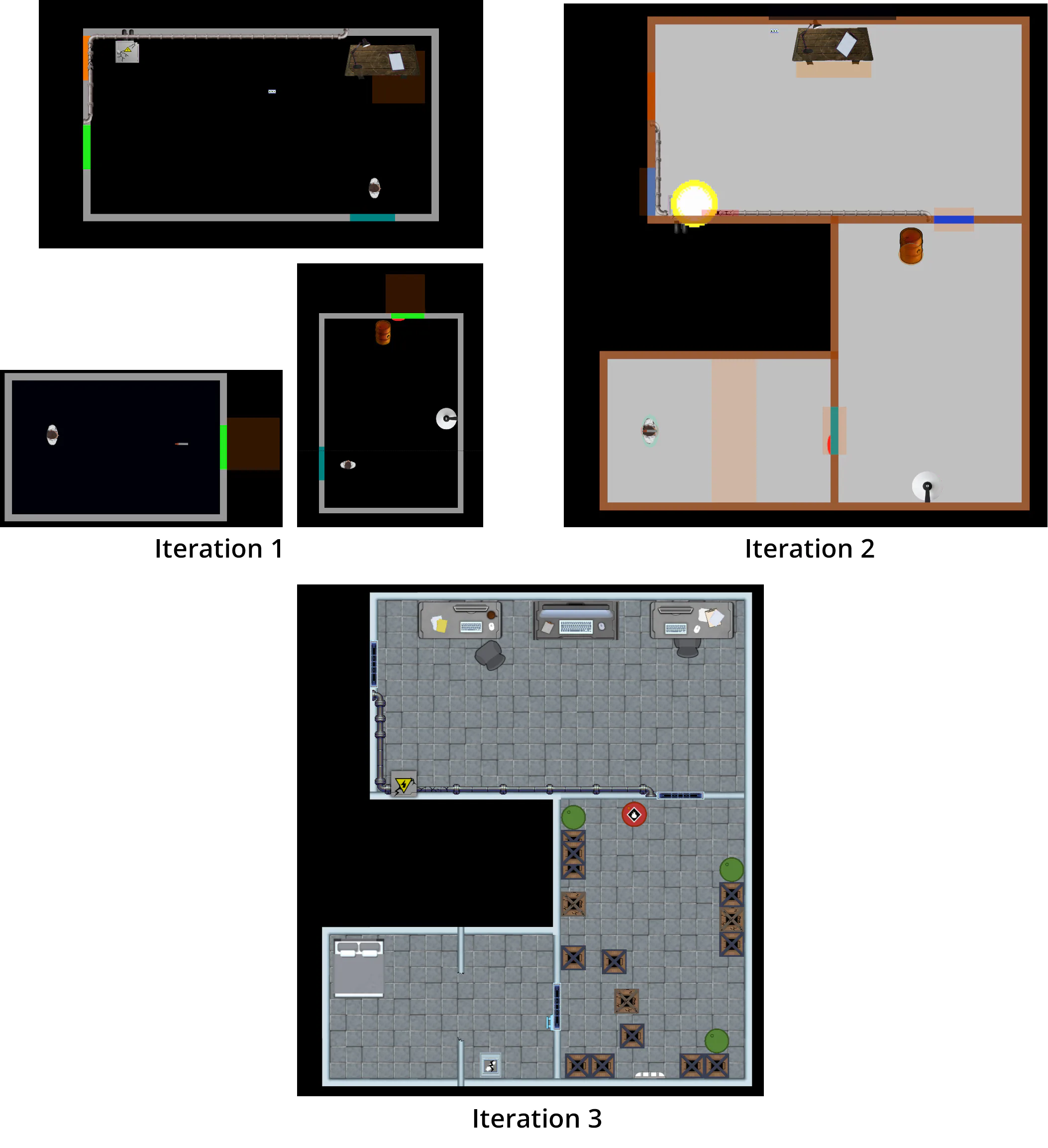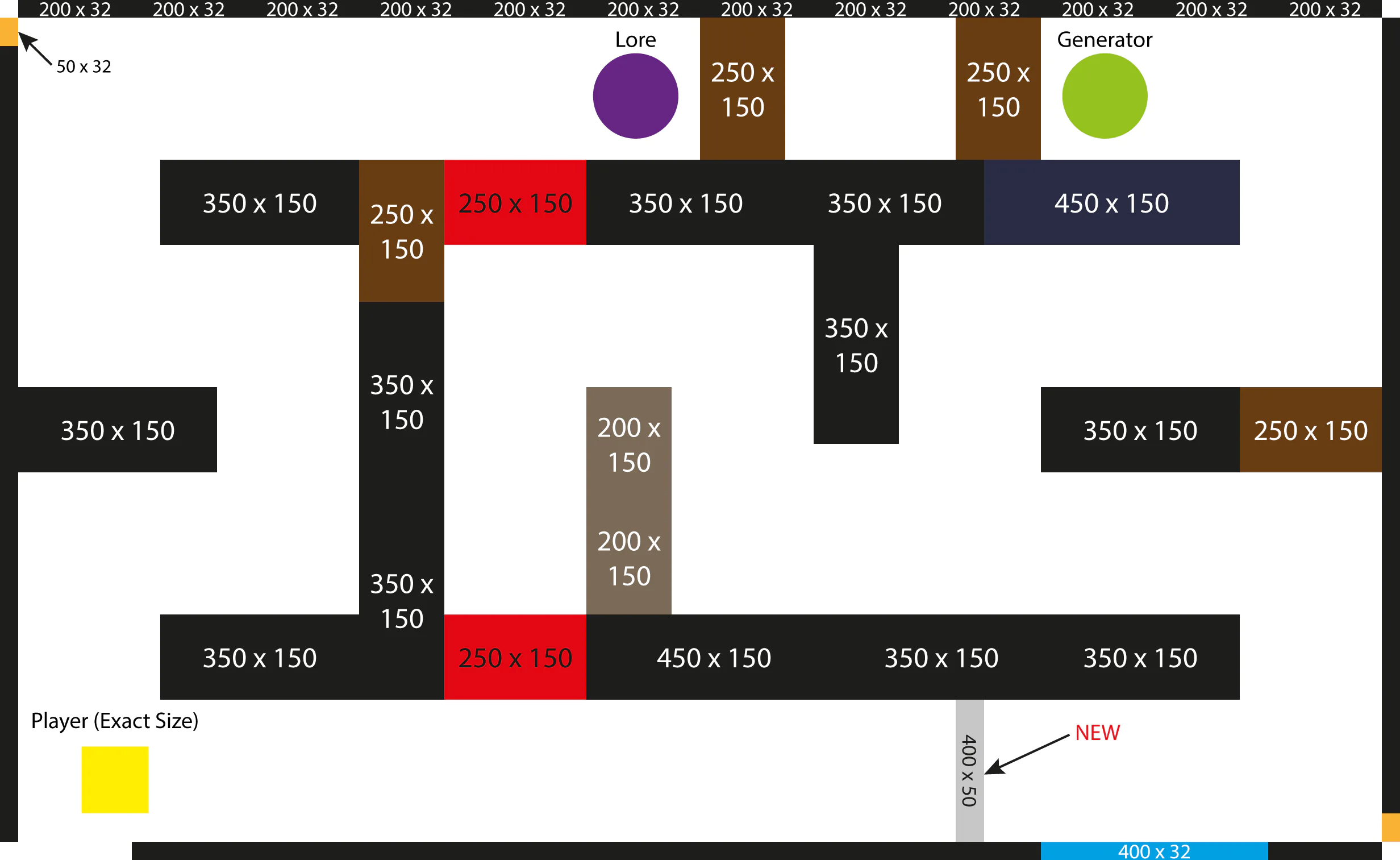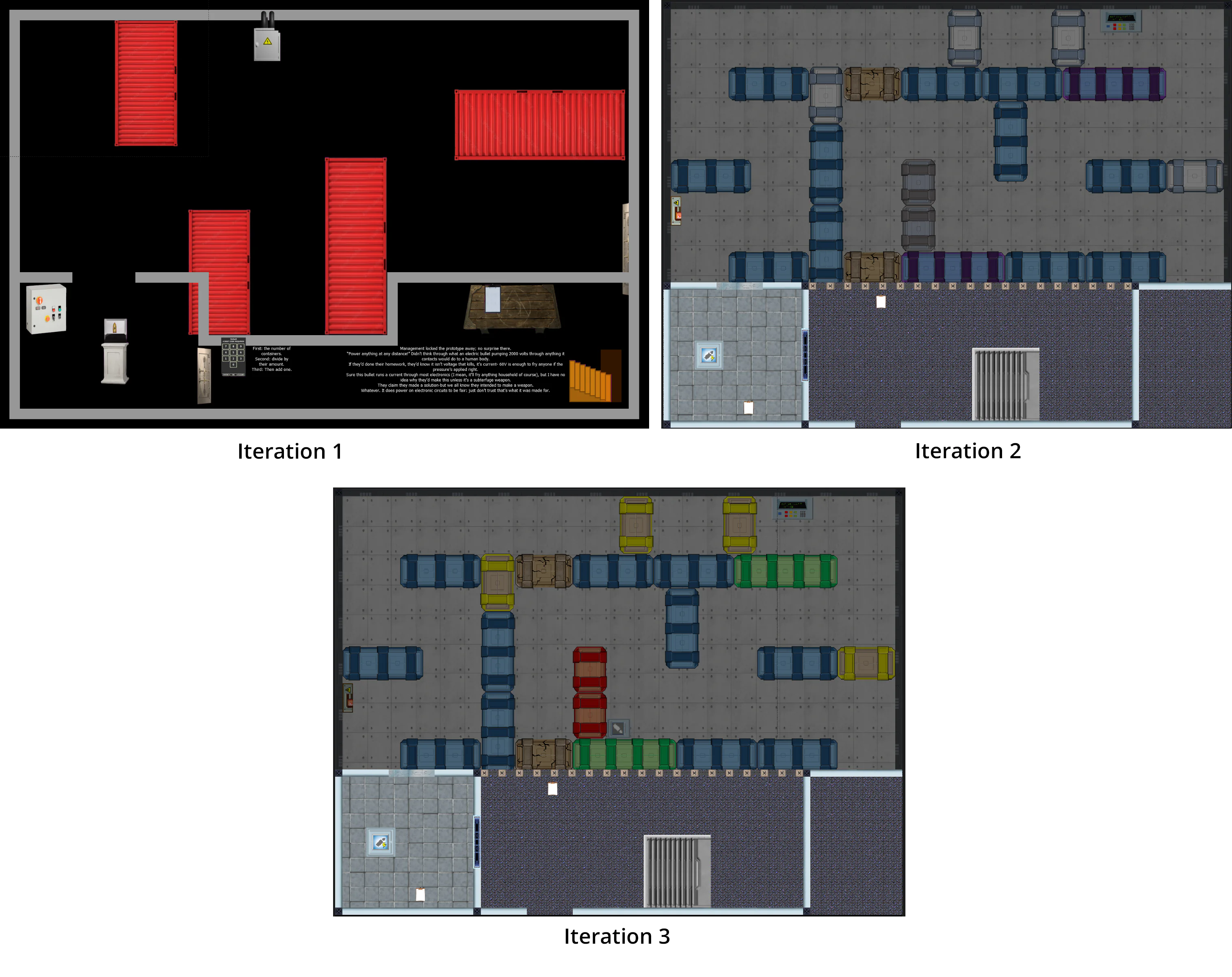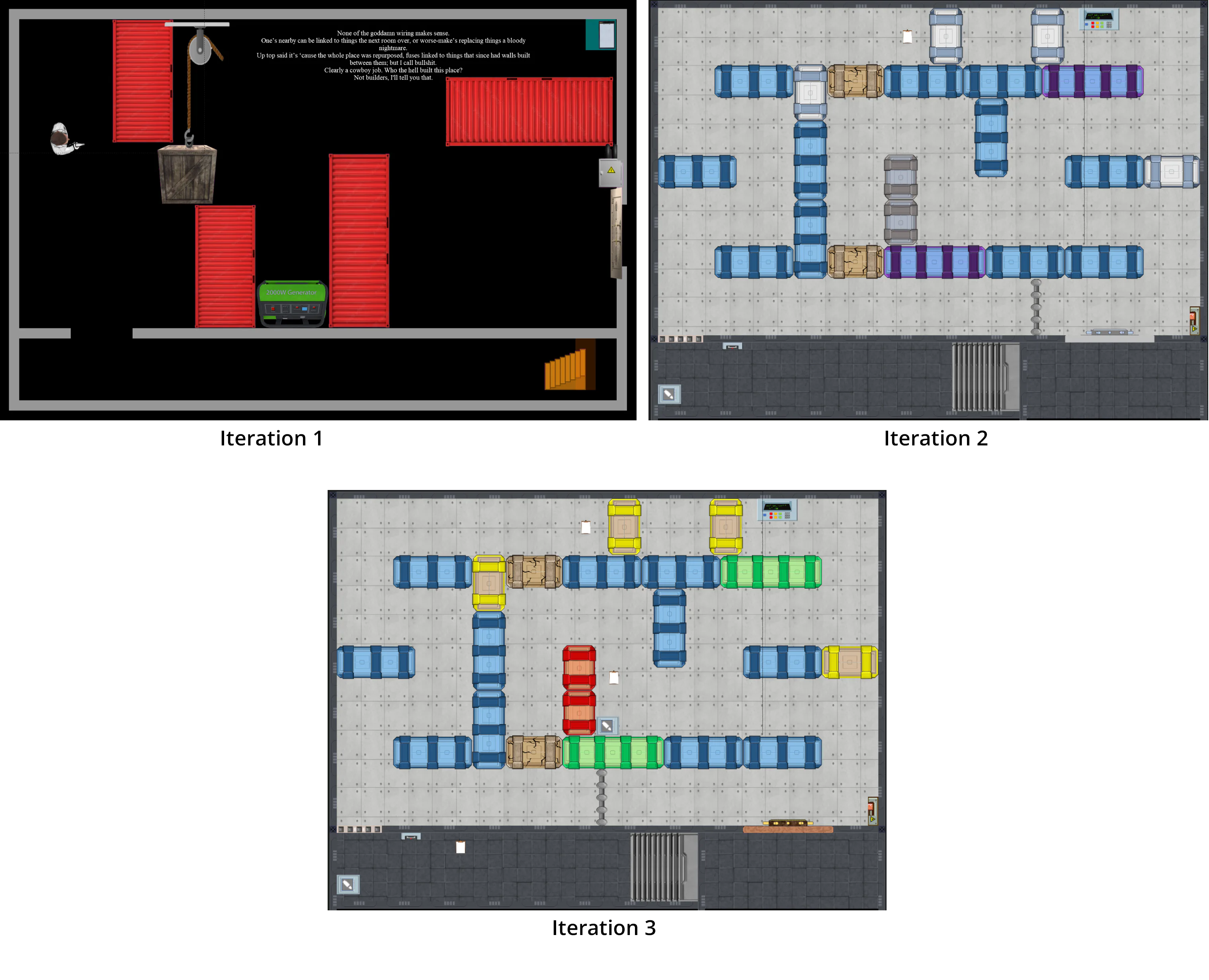Jonah Perry | Level Designer
Muzzle Flash
Engine:
Clickteam Fusion
Project Type:
Student project - Team size: 4
Roles:
Design, Level Design, Programming
Project Summary
Muzzle Flash is a 2D top down action-adventure game that requires strategic use of ‘the weapon’, a device that provides light for navigation and special bullets for interacting with the environment. In Muzzle Flash, the player explores a deserted facility, with ‘the weapon’ as their only tool for unlocking the path forward. As they venture deeper, the player learns of the facility's purpose, why it is seemingly abandoned, and why they were locked inside. Muzzle flash started as a paper prototype, which was then further developed into a 2D prototype.
Responsibilities
My responsibilities within the project were:
-
Working with the design team to outline the core loop and design pillars.
-
Working with the narrative designer to outline level beats and incorporate narrative into environmental puzzles.
-
Designing level layouts and environmental puzzle sequences.
-
Developing and programming implementations for the core muzzle flash light mechanic.
-
Programming level events, such as light switches, door triggers and keypads.
Level Summary
Muzzle flash consists of two levels. The first is a tutorial level, where the player receives ‘the weapon’ and uses it to break out of the confinement room they have been locked in. They continue through the linear structure discovering two more rooms, each requiring the player to solve a simple environmental puzzle to continue. The second level takes place in a storage warehouse within the facility. Within the player will learn of the warehouse control panel and how it can be used to gain access to ‘the prototype’, a new ammo type, which in turn can be used to escape the warehouse.
Level Design Goals
Level 1
-
Teach the player core mechanics (muzzle flash light, weapon interactions, player interactions). Use multiple rooms and keep puzzles simple, the goal is not to present a challenge to the player at this stage.
-
Convey to the player that their character was trapped in the starting room.
-
Eerie/mysterious atmosphere.
Level 2
-
Gradually increase the complexity of both level layout and environmental puzzle to acclimatise the player.
-
Maze-based environmental puzzle.
-
Introduce more narrative elements through ‘notes’ placed throughout the level.
-
Structure level to motivate the player to gain access to the prototype room. Building tension as the player gets closer to accessing the room.
Development Overview
Muzzle Flash was made as part of a group assignment centred on learning prototyping methods. The project began by collaboratively determining a core mechanic based on the theme ‘discovery’, and then creating an initial paper prototype to test this and other ideas for the level structure and gameplay beats. I then refined the group's initial core gameplay ideas into a core loop and design pillars. These were used to refine our ideas in a second paper prototype, which demonstrated a more complex ‘endgame’ puzzle.
Then the construction of the paper prototype began; level beats were identified and a rudimentary level structure was constructed around them. The findings from both prototype playtests, such as the need for an ammo refill mechanic, were carried forward into the 2D prototype.
As part of the development of the 2D prototype a formal level structure was implemented. I collaborated with my colleague to iterate on the paper prototype level designs, reworking elements, to create a tutorial level. The goal of this level was to teach the player the core mechanics and systems of the game, especially how to use the muzzle flash light and the dropped bullet casing to navigate. We then concepted and designed an additional, more complex, warehouse level. I then designed the maze-based environmental puzzle as the set piece for the warehouse level. I also designed and coded more specific game systems and mechanics including the lighting system, the collision system, and the object prompts and interact system. In addition, I also implemented the ammo management systems including the gun reload, the bullet dispensers, the ammo limit, and the functionality for switching between the ammo types. I also implemented the art assets and sound effects provided by the team.
The 2D prototype fixed a number of issues identified in the paper prototype. The first issue that was addressed was implementing accessible ammo refilling. An ammo refilling ‘bullet dispenser’ was implemented alongside new mechanics that disincentivized the player from spamming their gun. The second issue addressed was ensuring that the player wasn’t too disorientated by the flashing of light sources. By significantly limiting the number of light sources that flashed, in combination with utilising in-game elements to ground the player, such as the always visible bullet casings and static light waypoints, disorientation was kept to a minimum. Finally, environmental sound effects were implemented into the prototype which provided auditory feedback to the player based on their position and movement in a level.

